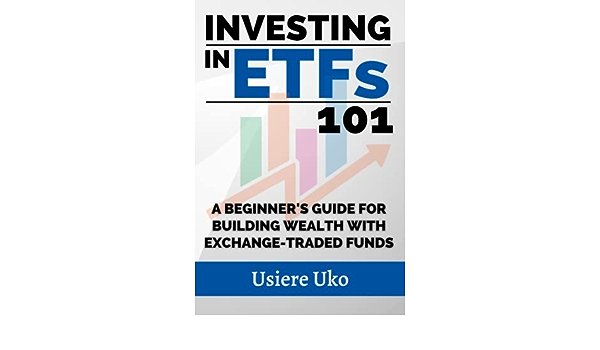Are you curious about investing in ETFs? Look no further! This beginner’s guide is here to help you navigate the world of ETF investments. Investing in ETFs, or exchange-traded funds, can be a fantastic way to diversify your portfolio and potentially maximize your returns.
So, where should you start? First and foremost, it’s crucial to understand what an ETF actually is. Basically, an ETF is a type of investment fund that is traded on stock exchanges, just like individual stocks. ETFs are designed to track the performance of a particular index, sector, or asset class. This means that by investing in an ETF, you are essentially buying a basket of assets that mirror the composition of the chosen index or sector. This diversification can help spread your risk and offer exposure to a wide range of investments. Now that you have a basic understanding of what ETFs are, let’s delve deeper into how to invest in them and make informed decisions that align with your financial goals.
A Beginner’s Guide to Investing in ETFs
Investing can be an intimidating endeavor, especially for beginners who are just starting to explore the world of finance. However, with the rise of Exchange-Traded Funds (ETFs), investing has become more accessible and user-friendly. In this comprehensive guide, we will walk you through the ins and outs of ETFs, from understanding their definition to choosing the right ones for your investment goals. So let’s dive in and demystify the world of ETF investing!
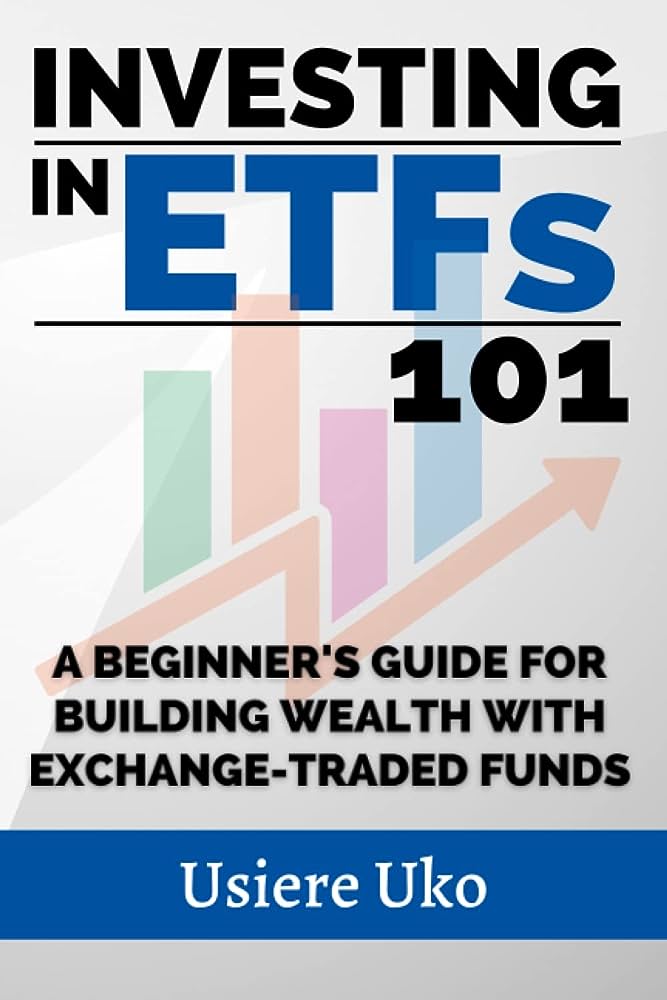
This image is property of Amazon.com.
Understanding ETFs
Definition of ETFs
Exchange-Traded Funds, or ETFs, are a type of investment fund that tracks the performance of a specific index, commodity, sector, or asset class. Unlike mutual funds, which are only priced at the end of the trading day, ETFs trade on an exchange throughout the day, just like stocks. This provides investors with the flexibility to buy and sell shares at market prices during trading hours.
Benefits of investing in ETFs
There are several compelling advantages to investing in ETFs. First and foremost, ETFs offer diversification by holding a basket of underlying securities. This helps reduce the risk associated with investing in individual stocks or bonds. Additionally, ETFs are known for their transparency and liquidity, allowing investors to easily access their investments and understand the price at which they are buying or selling shares. Furthermore, ETFs often have lower expense ratios compared to mutual funds, making them an attractive option for cost-conscious investors.
Different types of ETFs
ETFs come in various types, each catering to different investment strategies and asset classes. Broad market ETFs, such as those tracking the S&P 500 index, provide exposure to an entire market, allowing investors to capture overall market performance. Sector ETFs focus on specific industries, such as technology or healthcare. Bond ETFs invest in fixed-income securities, providing investors with income and potential capital appreciation. Commodities ETFs track the performance of commodities like gold or oil. Understanding the different types of ETFs is essential for building a well-rounded investment portfolio.
Getting Started with ETFs
Setting investment goals
Before diving into ETF investing, it is important to establish clear investment goals. Are you saving for retirement, a down payment on a house, or funding your child’s education? By defining your goals, you can align your investment strategy and time horizon accordingly. Setting realistic and measurable goals will help guide your decision-making as you navigate the world of ETFs.
Understanding risk tolerance
Investing always comes with a level of risk, and it is crucial to assess and understand your risk tolerance before investing in ETFs. Risk tolerance refers to your ability and willingness to endure potential losses in pursuit of higher returns. Factors such as your age, financial situation, and investment timeframe should be considered when evaluating your risk tolerance. ETFs with higher volatility may offer greater potential returns but also come with increased risk. It is essential to strike a balance between risk and reward that aligns with your personal comfort level.
Creating a diversified portfolio with ETFs
Diversification is one of the fundamental principles of investing. By spreading your investments across different asset classes, sectors, and regions, you can reduce the risk of any single investment negatively impacting your portfolio. ETFs inherently provide diversification by holding a basket of securities within a specific index or asset class. However, it is essential to ensure that your ETF portfolio is adequately diversified to mitigate risk and capture potential market opportunities. Balancing your investments across stocks, bonds, and other assets can help protect your portfolio during challenging times while capturing growth during market upswings.
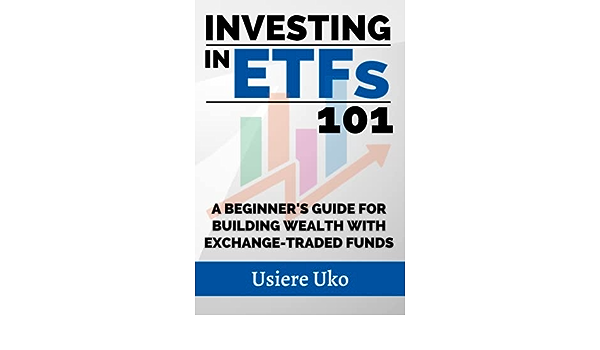
This image is property of Amazon.com.
Choosing the Right ETFs
Evaluating the expense ratio
The expense ratio represents the annual cost of owning an ETF and is expressed as a percentage of the fund’s assets. This fee covers management expenses, administrative costs, and other operational fees associated with maintaining the ETF. When comparing ETFs, it is important to consider the expense ratio, as lower fees can significantly impact your investment returns over time. While expense ratios should not be the sole determining factor, it is prudent to select ETFs with reasonable fees that align with the value they provide.
Analyzing historical performance
While past performance does not guarantee future results, analyzing an ETF’s historical performance can provide valuable insights. Reviewing how an ETF has performed in different market conditions and its track record compared to its benchmark can help evaluate its investment potential. However, it is crucial to consider the timeframe and market conditions during which the performance occurred. Long-term consistency and the ability to outperform its benchmark are favorable indicators when choosing ETFs.
Examining the underlying index or assets
Understanding the composition of an ETF’s underlying index or assets is vital for assessing its potential risks and rewards. Examining the stocks, bonds, or commodities within an ETF can provide insights into how the fund will perform under different market conditions and economic cycles. Additionally, understanding the weighting methodology, sector allocation, and geographic exposure of an ETF can help ensure it aligns with your investment objectives and desired level of diversification.
Opening an Investment Account
Selecting a brokerage firm
To invest in ETFs, you’ll need to open an investment account with a brokerage firm. There are numerous online brokers to choose from, each offering different features, trading platforms, and fee structures. It is important to research and compare brokerage firms to find one that aligns with your investing needs and provides a seamless trading experience. Look for brokers with a solid reputation, user-friendly platforms, competitive commission fees, and a wide range of available ETFs.
Comparing commission fees
Commission fees are charged by brokers when you buy or sell ETF shares. While ETFs are generally known for their low expense ratios, commission fees could erode your investment returns if you trade frequently or in smaller amounts. Some brokerage firms offer commission-free ETF trading, which can be advantageous for investors who plan to make regular contributions or rebalance their portfolios. Consider your trading frequency and investment strategy when comparing commission fees to find the most cost-effective option for your needs.
Considerations for tax-efficient investing
Tax efficiency is an important factor to consider when investing in ETFs, as it can impact your after-tax returns. ETFs are structured in a way that allows for tax efficiency through mechanisms such as in-kind creation and redemption, which can help minimize capital gains distributions. Additionally, ETFs that track broad-based indexes may have lower turnover and lower taxable events compared to actively managed funds. Understanding the tax implications of your ETF investments and utilizing tax-efficient strategies can help maximize your after-tax returns.
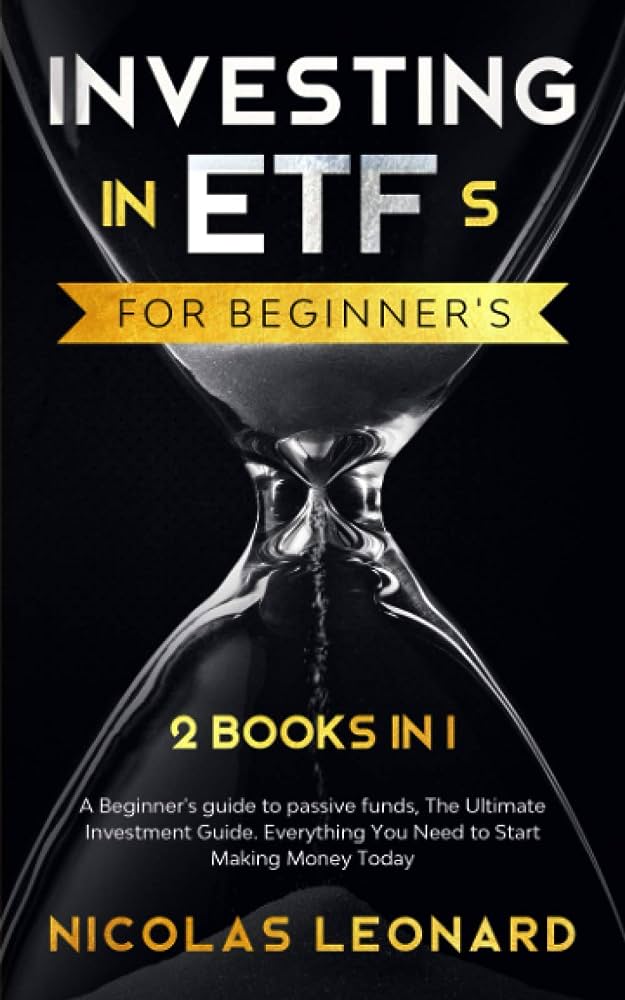
This image is property of Amazon.com.
Implementing Your Investment Strategy
Deciding on asset allocation
Asset allocation refers to the distribution of your investments across different asset classes, such as stocks, bonds, and cash equivalents. Determining the appropriate asset allocation is a crucial step in implementing your investment strategy. Your asset allocation should align with your risk tolerance, investment goals, and time horizon. Younger investors with a longer time horizon may opt for a more aggressive allocation with a higher proportion of stocks, while those closer to retirement may prefer a more conservative allocation with a higher percentage of fixed-income assets. Regularly rebalancing your portfolio to maintain your desired asset allocation is essential as market conditions and your investment goals evolve.
Dollar-cost averaging
Dollar-cost averaging is an investment strategy that involves regularly investing a fixed amount of money into an ETF, regardless of its price. This approach can help mitigate the impact of short-term market volatility and take advantage of market fluctuations over the long term. By consistently investing at predetermined intervals, you can acquire more shares when prices are low and fewer shares when prices are high, potentially lowering your average cost per share. Dollar-cost averaging can be an effective strategy for investors looking to build their ETF positions gradually while minimizing the impact of short-term market fluctuations.
Rebalancing your portfolio
As market conditions and your investment goals change, it is essential to periodically review and rebalance your portfolio. Rebalancing involves adjusting your asset allocation by buying or selling investments to realign with your target allocation. This process ensures that your portfolio stays in line with your risk tolerance and investment objectives. Rebalancing can involve selling assets that have appreciated significantly and reinvesting the proceeds in underperforming assets. By rebalancing, investors can sell high and buy low, optimizing their portfolio’s risk-return profile over time.
Understanding ETF Costs and Fees
Expense ratios
Expense ratios represent the annual fees charged by ETFs as a percentage of the fund’s assets. These fees cover management expenses, administrative costs, and other operational fees. When considering ETF investments, it is important to evaluate expense ratios, as they can impact your investment returns. Lower expense ratios generally indicate more cost-effective ETFs, especially when compared to similar funds in the same asset class.
Brokerage commissions
Brokerage commissions are fees charged by brokers for buying or selling ETF shares. These fees can vary widely across brokerage firms and can significantly impact the overall cost of your investments, particularly if you engage in frequent trading or invest smaller amounts. Before choosing a brokerage firm, be sure to compare commission fees and consider your trading frequency to ensure that the overall costs align with your investment strategy.
Bid-ask spreads
The bid-ask spread is the difference between the price at which market participants are willing to buy an ETF (bid price) and the price at which they are willing to sell it (ask price). This spread represents the transaction cost of buying or selling an ETF and is influenced by factors such as supply and demand, market volatility, and the liquidity of the underlying securities. While bid-ask spreads are typically minimal, they can impact your investment returns, especially when trading larger quantities or less liquid ETFs. It is important to be mindful of bid-ask spreads when executing trades to minimize transaction costs.
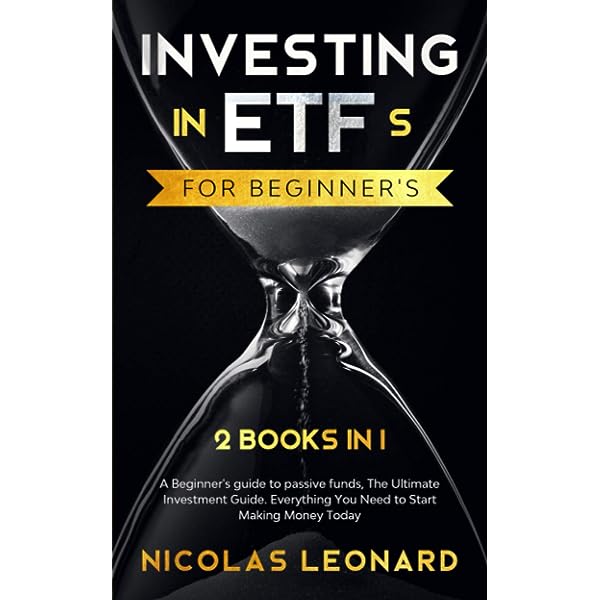
This image is property of Amazon.com.
Understanding ETF Performance Metrics
Total return
Total return represents the overall gain or loss of an investment over a specific time period, including both price appreciation and income generated from dividends or interest payments. When evaluating ETF performance, considering the total return provides a comprehensive view of how the investment has performed over time. Positive total returns indicate that the investment has generated profits, while negative total returns indicate losses. Assessing an ETF’s total return within the context of its benchmark and peers can help evaluate its historical performance and investment potential.
Tracking error
Tracking error measures the extent to which an ETF’s performance deviates from its benchmark index. This deviation can occur due to various factors, such as fees, sampling techniques (for ETFs tracking broad indexes), or differences in the timing of transactions. A lower tracking error indicates that the ETF is closely mirroring the performance of its benchmark, while higher tracking error suggests greater deviation. When selecting ETFs, consider the tracking error to understand how effectively the fund is delivering the desired exposure to the assets it aims to track.
Yield
Yield refers to the income generated by an investment, typically expressed as a percentage of the investment’s current price. For income-focused ETFs, such as bond or dividend ETFs, yield is an important performance metric. Yield can be influenced by factors such as interest rates, the underlying assets’ quality and duration (for bond ETFs), and the frequency of dividend distributions (for equity ETFs). When comparing income-oriented ETFs, examining their historical yield and assessing the sustainability of income distributions can provide insights into the investment’s income potential.
Managing Risk in ETF Investments
Risk management strategies
Managing risk is a critical aspect of investing in ETFs. One risk management strategy is diversification, which involves spreading your investments across multiple asset classes and sectors to reduce correlation and potential losses. Additionally, employing strategies such as dollar-cost averaging and periodic rebalancing can help mitigate the impact of market volatility and maintain your desired asset allocation. Developing a well-thought-out investment plan, setting realistic expectations, and staying informed about market trends are key components of effective risk management for ETF investors.
Diversification and asset allocation
Diversification is a risk management technique that involves investing in a variety of assets to reduce exposure to any single investment. By spreading your investments across different asset classes, sectors, and geographies, you can potentially minimize the impact of an underperforming investment on your overall portfolio. Asset allocation, on the other hand, refers to the distribution of your investments across various asset classes based on your risk tolerance, investment goals, and time horizon. The combination of diversification and asset allocation can help mitigate risk and optimize the risk-return profile of your ETF investments.
Monitoring market trends
Staying informed about market trends is crucial for proactive risk management. Market conditions can rapidly change, impacting the performance of different asset classes and sectors. By monitoring market trends, you can identify potential investment opportunities, make informed decisions regarding portfolio rebalancing, and adjust your asset allocation as needed. Various financial news sources, research websites, and professional financial advice can provide valuable insights into market trends, allowing you to make well-informed investment decisions.
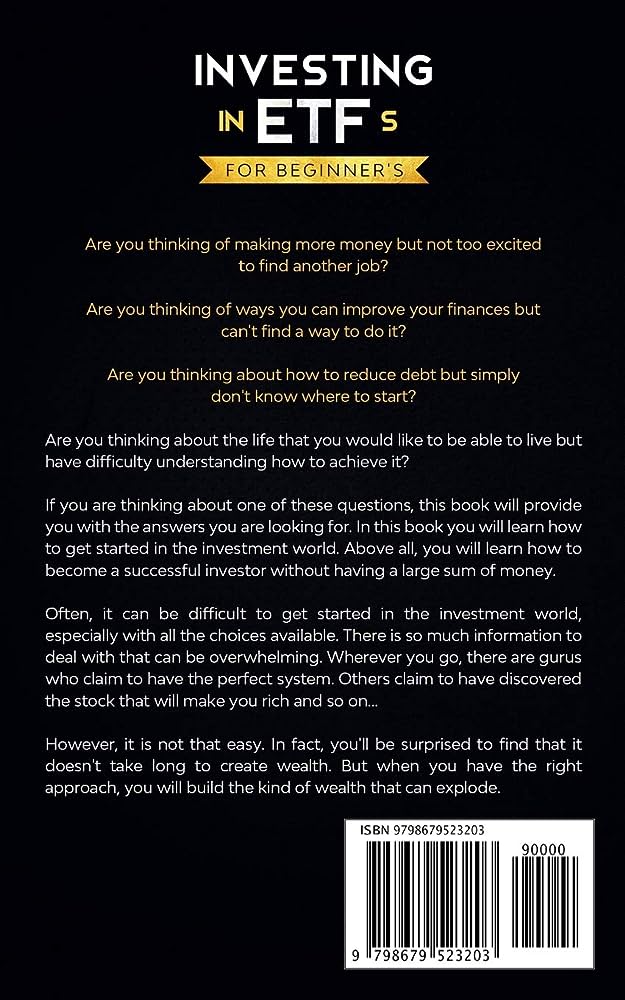
This image is property of Amazon.com.
Tax Considerations for ETF Investors
Tax-efficient ETF investing
ETFs offer certain tax advantages due to their unique structure and how they are managed. One of the main tax advantages of ETFs is the ability to minimize capital gains distributions through in-kind creation and redemption. In-kind transactions allow ETFs to transfer securities instead of selling them, reducing taxable events. Additionally, ETFs that track broad-based indexes tend to have lower turnover, leading to fewer taxable events compared to actively managed funds. Understanding the potential tax benefits offered by ETFs and utilizing tax-efficient investing strategies can help maximize your after-tax returns.
Capital gains and dividends
When investing in ETFs, it is important to consider the tax implications of capital gains and dividends. Capital gains occur when you sell an ETF for a profit. Depending on the holding period, capital gains can be classified as short-term or long-term and may be subject to different tax rates. Dividends, on the other hand, are taxable distributions made by certain ETFs to their shareholders. Qualified dividends may be subject to lower tax rates than ordinary dividends. Be sure to consult with a tax professional or utilize tax resources to understand the tax implications of capital gains and dividends based on your specific circumstances.
Tax-loss harvesting
Tax-loss harvesting is a strategy that involves selling investments at a loss to offset capital gains and potentially lower your overall tax liability. This strategy can be particularly valuable when investing in ETFs, as their intraday liquidity allows for more frequent trading compared to mutual funds. By strategically realizing losses in your portfolio, you can potentially reduce your taxable income and improve your after-tax returns. However, it is important to be mindful of the wash-sale rule, which restricts the repurchase of a substantially identical security within a specified timeframe to claim the tax loss.
Resources for ETF Investors
ETF research websites
There are several reputable websites that offer comprehensive research and analysis on ETFs. These platforms provide insights on an ETF’s holdings, performance, expense ratios, and other important metrics. Some popular ETF research websites include Morningstar, ETFdb, and Bloomberg. Utilizing these resources can help you make informed investment decisions and stay up to date with the latest industry news and trends.
Financial news sources
Staying informed about financial news and current market conditions is vital for successful ETF investing. Financial news sources, such as CNBC, Bloomberg, and The Wall Street Journal, provide real-time updates on market trends, economic indicators, and investment opportunities. Keeping track of financial news can help you make timely investment decisions and adjust your portfolio as needed.
Professional financial advice
If you are uncertain about how to proceed with your ETF investments or need personalized guidance, seeking professional financial advice can be beneficial. Financial advisors can provide tailored investment recommendations based on your individual circumstances, risk tolerance, and investment goals. They can help you navigate the complexities of ETF investing, build a diversified portfolio, and develop a holistic financial plan. When choosing a financial advisor, consider their credentials, experience, and reputation to ensure they align with your needs.
In conclusion, investing in ETFs is a beginner-friendly way to access a wide range of assets and diversify your portfolio. By understanding the definition of ETFs, the benefits they offer, and the factors to consider when choosing and managing them, you can embark on your investment journey with confidence. Remember to set clear investment goals, assess your risk tolerance, and align your investment strategy with your objectives. With the insights provided in this guide and the wide array of resources available to ETF investors, you are well-equipped to make informed decisions and navigate the world of ETF investing successfully. Happy investing!

